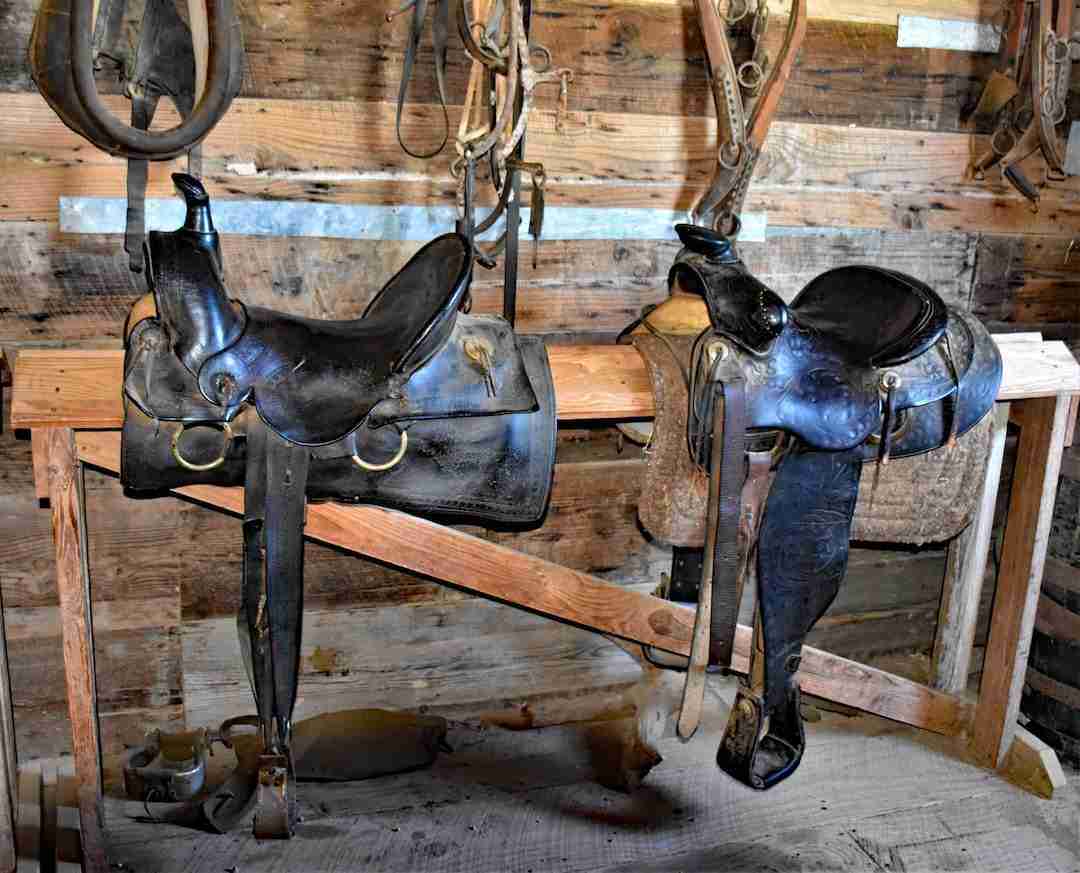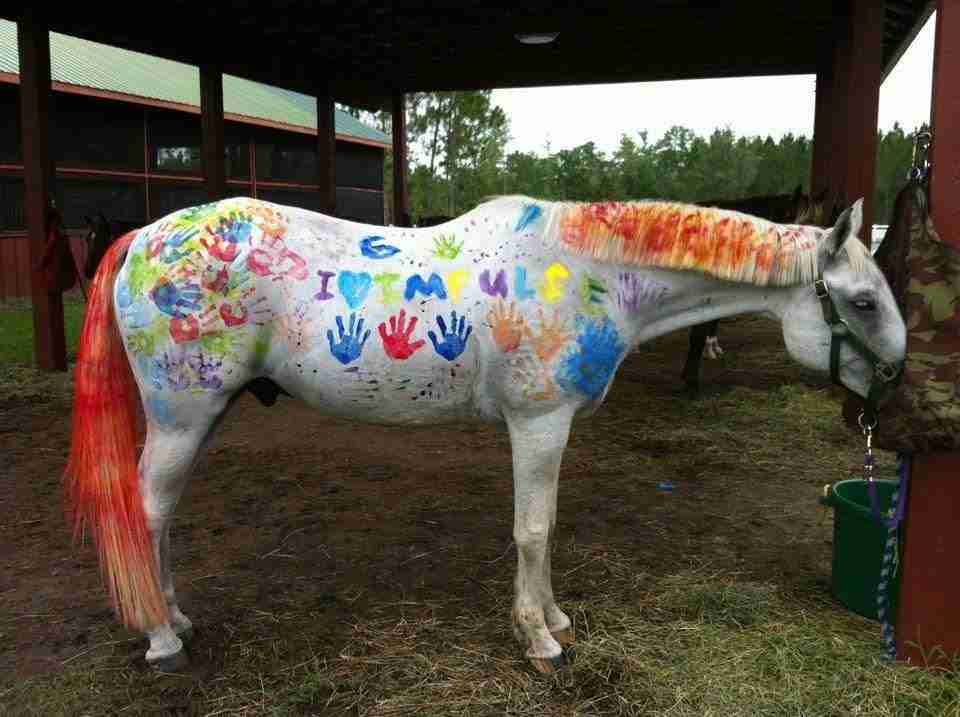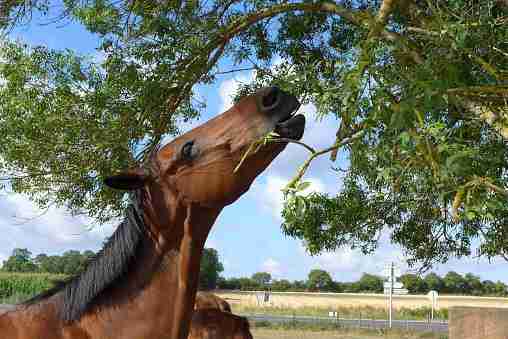There are many reasons you might want to start allowing your horse to transition from riding with shoes to barefoot riding. There are several advantages to barefoot riding but also a few disadvantages. In addition, there are instances where it may be impossible. First and foremost, you must consider the horse’s wellbeing.
To condition a horse to barefoot riding on the road, you must make the transition extremely slowly. Begin by slowly introducing the horse to soft ground without shoes, gradually increasing the time spent on rougher surfaces. Observe the hooves carefully and ensure proper nutrition throughout.
To ensure that your horse can transition to barefoot riding without suffering any adverse effects, you will need to condition them slowly while paying attention to various factors. You can put certain measures in place to make the entire process significantly easier for the horse.
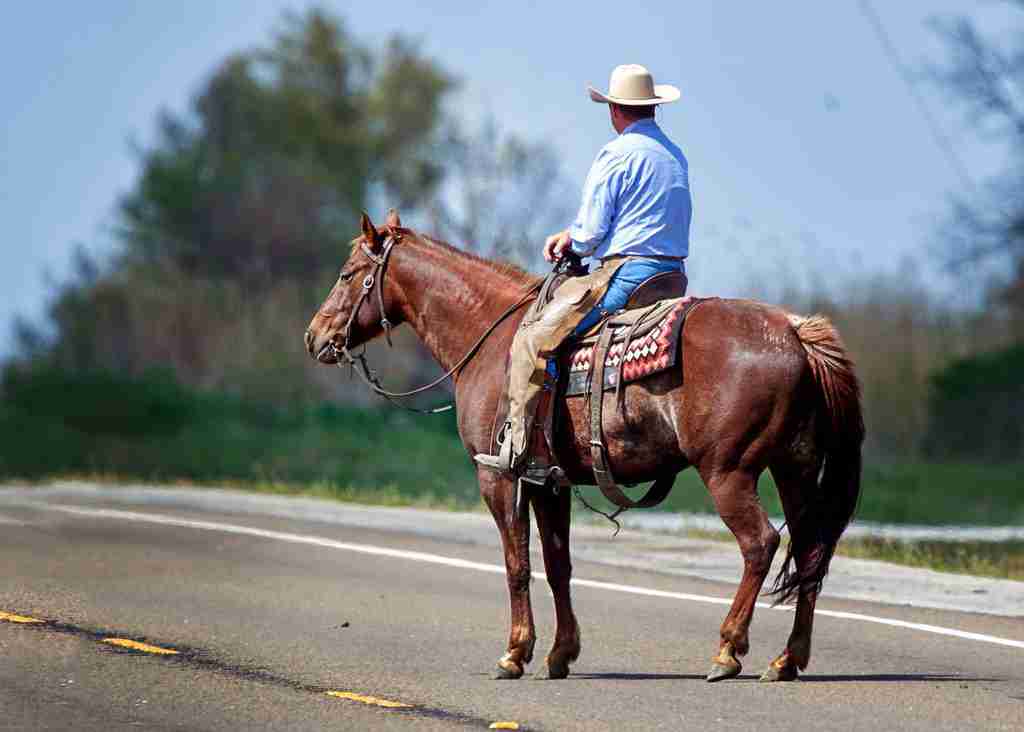
How To Condition Your Horse To Barefoot Riding On The Road
When conditioning your horse to barefoot riding, it’s important to conduct the transition extremely carefully. At first, the horse’s feet will be tender. The full process can take up to a year before your horse is fully ready to go barefoot riding on the road.
You should begin with a plan in mind as to how you will embark on toughening your horse’s hooves.
Once their shoes have been removed, the horse will require time to harden and grow their hooves. As they transition to barefoot riding, their hoof walls will strengthen, and their soles will gradually thicken. This will ultimately help them to cope with the direct contact with the ground.
Begin by allowing your horse to walk barefoot on the soft grass. Observe the horse, and ensure that you check their hooves regularly to ensure that there are no issues. Each day, you can allow the horse to spend more time walking barefoot on increasingly rough terrain.

Slowly introducing the horse to different terrains will ensure that the hooves can thicken without causing any pain.
Throughout the transition, your Farrier will check and test the thickness of the soles. If the soles are too thin, the horse will be required to remain on soft grass for longer before being introduced to rougher terrain.
It’s important to gradually move towards more rough terrain to ensure proper foot development. The dry, rough terrain you will introduce the horse to after the soft grass helps prepare them for barefoot riding on roads.
Suppose the horse remains on soft grass, especially with significant moisture. In that case, their hooves will remain soft and not adapt fully to barefoot riding on the road.
Considering the horse’s workload throughout the transition period to barefoot riding is important. Suppose the horse is accustomed to a certain workload while wearing shoes. In that case, they will not be able to cope with the same workload with their shoes off while being conditioned to ride barefoot.
While transitioning to barefoot riding, you must ensure that the horse still enjoys lots of movement. This will help ensure that their hooves will grow strong and healthy.
It’s also important to allow the hooves to grow past where the nail holes were originally located. While this will depend on the speed of hoof growth and where the nail holes are located, you can expect an average time of about six to nine weeks.
Disadvantages Of Barefoot Riding
There are naturally some disadvantages to barefoot riding. This is especially true if the horse in question is not well-adapted to barefoot riding.
If there is loose gravel or generally uneven surfaces, stone bruising will occur on the soles of the horse’s hooves. This can occur despite the horse having tough hooves.
If stone bruising has occurred on the sole of the horse’s hoof, they will avoid putting any weight on the specific limb in question. As time passes, the horse will suffer increasing damage and likely end up with an abscess.

Advantages Of Barefoot Riding
Barefoot riding will afford your horse several benefits. Firstly, the horse will enjoy significantly improved traction on roads compared to walking with metal shoes. Shoes provide no grip on roads made of concrete, paving, or any other solid surface.
Any loose gravel or particularly sharp stones will cause a horse to stumble.
Barefoot riding will ensure better circulation moving towards the horse’s feet. This will also mean healthy, strong growth of the hooves. In addition, the horse will enjoy significantly improved traction overall.
The Role Of Food In Barefoot Conditioning
Proper nutrition is an essential factor in the transition period to barefoot riding. The correct food will help to strengthen the horse’s hooves sufficiently to allow them to endure barefoot riding comfortably. Any horse must have a balanced diet, which is particularly important during the transition period to barefoot riding.
The important aspects of diet include high-quality hay, sufficient protein, vitamins, minerals, and fatty acids.
Regarding food, it’s extremely important to avoid feeding the horse too much sugar. High sugar levels in the horse’s diet can result in inflammation in the laminae. As a result, the horse’s hooves will be of poor quality and extremely tender during the transition from shoes to barefoot.
To help reduce the horse’s sugar intake, it is best advised to soak their hay in water before feeding. When it comes to the grasses the horse is permitted to eat, try to reduce the amount of rich grass they can consume at any given time. Rich grass tends to have a high sugar content with few positive effects.
When it comes to chaff, opt for the unmolassed variety to further limit sugar intake. Supplements with essential vitamins, minerals, and fatty acids are important to ensure the horse remains healthy and its diet remains balanced.
Biotin is another great supplement to try. Biotin will help to boost the horse’s hoof growth and general hoof quality.
Other Articles You May Also Like
- 7 Spotted Horse Breeds
- Spirit Horse Names for Your Special Horse
- How Is Your Mare’s Belly Shape Changing Before Foaling
- Steps To Breaking A Horse To Ride
- Sweet Feed For Your Horse
Work With A Farrier Throughout
A farrier must be involved in conditioning your horse for barefoot riding. The Farrier of your choosing must have a recognized qualification in this area and possess the relevant insurance.
A farrier will have a thorough knowledge of the different types of hoof trims and how these will affect the horse differently. A farrier will know the best type of trim to suit your horse throughout its transition from shoes to barefoot riding.
The Farrier will consider the shape of the hoof, the amount of shock absorption, the surface of the hooves, and the type of work the horse is generally involved in. For barefoot riding, the Farrier can specify the best way to prepare or reshape the hoof for this specific purpose.
Hoof Trimming For Barefoot Riding
Another essential component of helping your horse transition to barefoot riding is ensuring their hooves are always trimmed correctly. For barefoot riding, the hoof is trimmed with a beveled edge along the toe section. By trimming the hoof in this way, the horse is encouraged to land with their heel first.
By ensuring that the heel lands first, the rear two-thirds become the weight-bearing hoof area.
As the horse’s hooves adapt to being without shoes, the hooves will gradually change shape and expand. As a result, the Farrier will adapt how they trim the hoof. This will correctly encourage healthy growth.
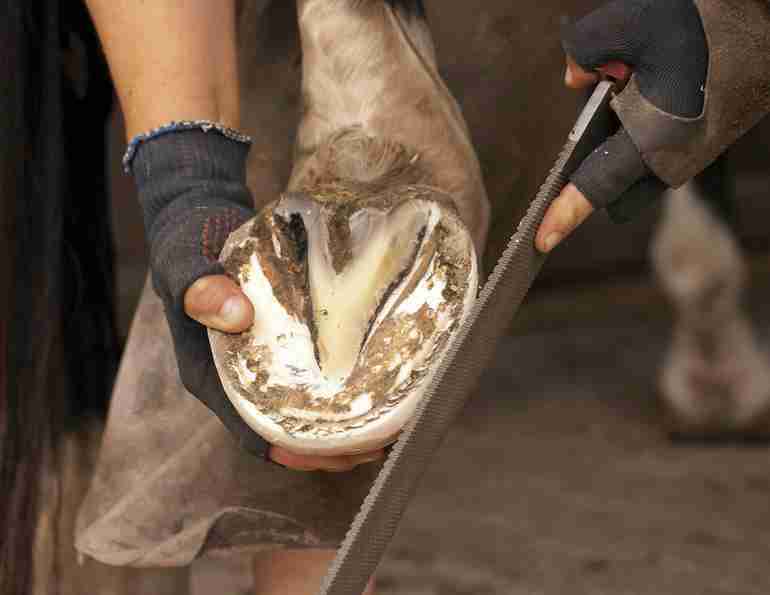
The Role Of Boots During Transition
Boots can be particularly useful for a horse’s hooves transitioning from shoes to barefoot riding. There are countless varieties of boots available, so you will need to shop around before finding the perfect fit.
Boots are particularly useful when transitioning to barefoot riding on the road or surfaces like sand. These surface types are particularly abrasive to the horse’s hooves.
During the transition to barefoot riding, boots can help to protect the horse’s, particularly tender feet. Unlike horseshoes, boots don’t provide any structural support. In addition, boots are particularly easy to put on or take off the horse’s feet.
The boots will allow the horse’s hooves to become stronger naturally while ensuring the hooves remain fully supported throughout. Boots are particularly useful if the horse’s feet are tender after removing shoes and while being helped to acclimate to barefoot riding.
The time it takes a horse to adapt to barefoot riding will vary significantly depending on the horse. It’s better to allow the horse to adjust in its own time without placing too much pressure on the outcome. Naturally, more time spent barefoot over wearing boots will benefit the horse.
It’s important to remember that some horses may never be able to toughen their feet sufficiently to allow them to walk on roads or other rough terrains without boots.
Conclusion
Conditioning your horse to barefoot riding on the road can be a time-consuming process that will require patience and significant vigilance as to the condition of the horse’s hooves. In addition, one must consider the overall health of the horse. Boots may help the horse during the transition from shoes to barefoot riding.
Resources
https://www.yourhorse.co.uk/horse-care/hoof-care/making-the-transition-to-barefoot/
https://blog.easycareinc.com/conditioning-the-newly-bare-hoof/






